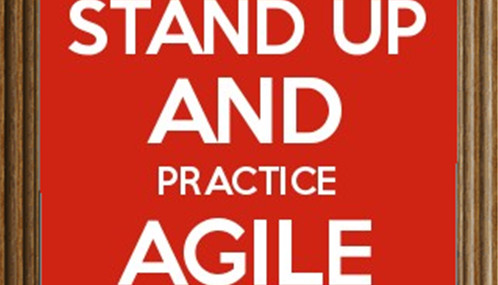
Agile....Sales?!
As I continue to evolve as sales professional, I have been part of both large/small successful/failed sales teams for more than a decade. Over those years a recurring challenge for most of the teams I worked with was keeping the sales teams aligned. With different personalities, different levels of technology understanding, and various politics involved it always seemed impossible to get the sales team to stay aligned. You can update your CRM, share email updates, or speak during the weekly business meeting and it never seems to be effective.
One of my goals as I transitioned from project management/analyst work to sales & marketing was to never get buried in the admin of sales…ever.
When I first managed Agile teams a few years ago it was strictly a development framework but recently there has been an influx of how effective the use of agile practices can be in other arenas. The use of agile in sales and marketing is a hot topic aimed to focus your team’s efforts on value added tasks rather than lengthy meetings and administrative work. Give it a try and then follow up with me on how it went.
Let’s take a look at how you can make your sales team agile:
- DAILY STAND-UP
The first, and most effective, way to implement time waste reduction for your sales team is to perform what is known as a “daily stand-up”. Taken from the daily meetings of software development teams, the daily stand-up aims to take no more than 15 minutes, hence the term stand-up. This practice has become one of the most effective, as Shore Group has started to push many of our clients to align their teams with our agile teams. Limiting your daily briefings to 15 minutes will keep your team and meetings on task, focused, and short. Reducing the timemanagement spends in meetings can be shifted to value added tasks such as coaching and training.
But how do I do it?
- Ask these 3 questions ONLY from everyone in the meeting:
- What did I accomplish yesterday?
- What will I accomplish today?
- What do I need to change in order to be more productive?
- SPRINT
A fundamental component of agile methodology includes work ‘sprints’ in which clear goals are agreed upon between the manager and employee. These distinct goals and objectives are separated into 4-6 week time intervals known as ‘iterations’. Catherine Louis of CLL, a leader in agile training, found that organizations using an agile sprint to perform work helps to “increase the quality of deliverables” and allows employees to “cope better with change”. As a sales manager, this is your chance to coach sales reps and agree on recurring revenue targets to be met. Sprints allow for a more even workload based upon driven metrics rather than intuition, or what you “think” will happen next.
But how do I start?
- Coach – Meet with your sales team and make a signed agreement on revenue goals and other account objectives for a 6 week period. Receive sales rep input on where he or she feels good and bad about given objectives. Laying out a high level framework will help make daily stand-ups important for gauging their progress.
- Decide on Metrics – Focus on a small number of direct metrics for your sales team. Will it be purely revenue? Number of deals closed?
- Retrospective – As the sprint comes to the end, a ‘retrospective’ takes place in which a sales rep and sales manager reflect on the details of the previous sprint. This is a detailed meeting in which the manager can begin to coach on how to improve lagging metrics and the sales rep can share minute, detailed issues they have before going into the next sprint. Proven metrics of best performing reps can be used to help coach underperforming ones.
- TRAINING
The last, and most important aspect of implementing an agile organizational framework is to have allow your sales team to move through the proper training. CLL-Group has a great framework for implementing the different aspects of an agile methodology. Moving to agile is an organizational and cultural change, not simply a technology tool to be implemented. Agile is quickly becoming an adaptable, fast paced management tool allowing companies to gain an edge in hypercompetitive markets.
So STAND UP and if you need any help beginning your agile sales methodology don’t hesitate to reach out!